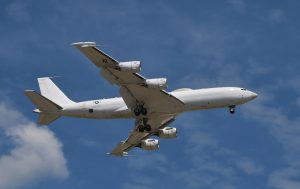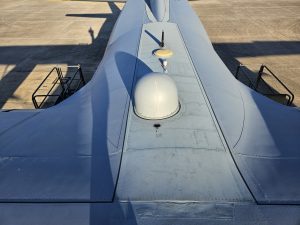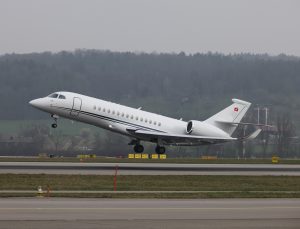Imagine standing holding ping-pong balls and being asked to throw the lightweight sphere at moving targets at least 100 feet away. The targets are not only small but are circling and moving around continuously, at a rapid rate.
Now consider an aircraft flying at 45 000 feet, at nearly 0.9 Mach, and constantly maneuvering. In our world, the paddle represents the antenna, and the satellite data wave is the moving ping-pong ball. Your hand is effectively the satellite transmitting the wave toward the antenna. Add in unexpected rain, a breeze, or someone walking across your line of sight, and you can begin to grasp the complexity of delivering connectivity to an aircraft.
Yet we are committed to, and passionate about, making sure that ping pong ball hits the paddle every time. We want our customers to receive a simulacrum of their terrestrial connectivity experience in the air. We know that the appetite for applications driven by data is growing, and we understand that being up in the air no longer means being out of touch. It is clear to us that the expectations from our customers are high in terms of being productive, informed, and entertained during every flight.
Hitting the target every time requires ingenuity, dedication, and a different way of thinking about harnessing the potential available from the growing number of satellite constellations operating on an increasing number of orbits. This is why SD has invested in innovating and manufacturing advanced, future-proof technology to meet the opportunities presented now, and in the future.
The Satcom Direct Plane Simple®, antenna series supports our ambition. Designed by aviators for aviators, the antennas are the first and still the only hardware solutions purpose-built for the business aviation sector. The technology is built on agnostic architecture, which means that we can engage with best-in-class partners to add value to its functionality.
There are a host of considerations when evaluating solutions, and the continual growth of multi-orbit options means it is no longer a case of choosing Ka, Ku-band or any other frequency to support the data connection. More than ever, equipping aircraft with connectivity requires analysis of usage, destinations, passenger numbers and airframe type. The good news is that the right mix of satellite networks combined with our hardware delivers unbroken coverage to keep you connected beyond all expectations.
We are aware that our owners and operators have to make significant investments in connectivity solutions which is why we are happy to break the connectivity mould. As our President, Chris Moore, explains, “Gone are the days when owners were trapped in a package that didn’t meet transforming data demands, had to choose from fixed pricing, or needed to invest in new expensive systems to align with changing mission needs. With the SD terminals, our wide spectrum of partner networks and our SD ecosystem to support all operations, our customers are assured that as their usage evolves, so will the terminal capabilities. They have, after all, been designed to meet today’s requirements and easily adapt to tomorrow’s needs.”
This lateral thinking has resulted in numerous benefits for our customers, including flexible pricing plans, uncomplicated installation, easy upgrade paths, and customer support 24/7/365 around the globe.
We anticipate that in the very near future, the multi-orbit, dual dissimilar, offering will become the norm for aircraft that frequently fly around the globe. Researching the variables is essential, which is why we focus on putting the customer at the center of everything we do. We understand that the sector has a plethora of often confounding choices which is why we invite you, to let SD help you make informed decisions to protect your investment.
Download the latest White Paper on Multi-orbit connectivity.


